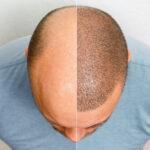
Common methods to straighten teeth that aren’t aligned straight and enhance your smile include dental braces. Many individuals, however, have a questions about How Long Do You Have to Wear Dental Braces? Hence, your age, the degree of your tooth issues, the kind of braces you decide upon, and other factors all influence the duration. Therefore, this blog article will go further into these topics so that you may better understand what to anticipate.
Understanding the Basics of Dental Braces:
Before we discuss the factors influencing the duration of time, let us briefly review how braces function. Moreover, braces, wires, and bands are composed of continual pressure on your teeth to shift them into the proper spot makeup braces. Furthermore, your orthodontist will make consistent adjustments to ensure you continue to advance as part of the therapy.
How Long Do You Have to Wear Dental Braces?
The kind of braces, and their particular dental issue will determine how long someone must wear them. Moreover, people usually wear braces for 18 to 24 months. Some individuals find that they improve anywhere from six months to three years. Hence, the degree of misalignment of the teeth, patient age, and compliance with orthodontic instructions will all affect how long it takes. However, regular visits and modifications are required to ensure the braces are operating as they should and to make any necessary adjustments. Ultimately, the dentist will create a customized program for the patient according to their needs and desired outcomes.
Factors Affecting the Duration of Wearing Braces:
Severity of Dental Issues:
If your teeth are only slightly miss-aligned or out of line, you may only need to wear braces for a limited period. It could last six months to a year.
Treating more complex cases require more time of braces wearing. Therefore, people with several teeth in a row, significant gaps, or misaligned bites like overbites or underbitesusually requires more time. So, these run ranging from eighteen months to three years.
Kind of Braces:
Popular metal braces are the most typically used and usually fit for severe conditions. Usually needing more time for therapy, they can solve so many difficulties.
Wear lingual braces; they are invisible from the front. However, dentists attach them to the rear of your teeth. Treating might take more time if the improvements are more difficult to implement.
Clear Aligners for Invisalign are removable. Moreover, they work well for mild to severe instances; usually, it takes 12 to 18 months. Furthermore, for them to function, however, you must wear them for at least 22 hours daily.
Age:
Younger individuals can have shorter treatment timeframes as their teeth and jaws develop. This is because they welcome changes more readily.
Adults may need more dental work as their bones are more robust and thoroughly developed. However, because of advances in dental technology, patients now enjoy much shorter treatment durations.
Patients’ Compliance:
If you want to advance rapidly, you must follow your orthodontist’s recommendations. Moreover, this entails following advice on dental care, maintaining your meetings, and donning additional equipment like rubber bands.
Steer clear of foods that can compromise braces, such as sticky or hard objects, to help prevent delays.
Tips for Shortening Treatment Time:
- Time Consistency Regular visits to the orthodontist will enable you to monitor your development and ensure timely tooth modification.
- Maintaining clean teeth and braces can help to prevent issues that could prolong treatment times.
- If your dentist advises wearing elastics or headgear, follow their directions to greatly affect the length of your treatment.
- Steering clear of hard, sticky, or chewy foods can assist in maintaining your braces in excellent condition and prevent issues.
Final Verdict:
Though most individuals require them for six months to three years, dental braces may be worn for a wide range of durations. This period relies on several factors, including your age, the kind of braces you wear, the degree of dental issues, and the degree of adherence to treatment guidelines. Working closely with your dentist and knowing about these issues can help you ensure that your treatment proceeds fast and without problems, therefore producing a better, more confident smile.
For all dental issues, including braces and other orthodontic treatment, consult us at Enfield Royal Pk.







